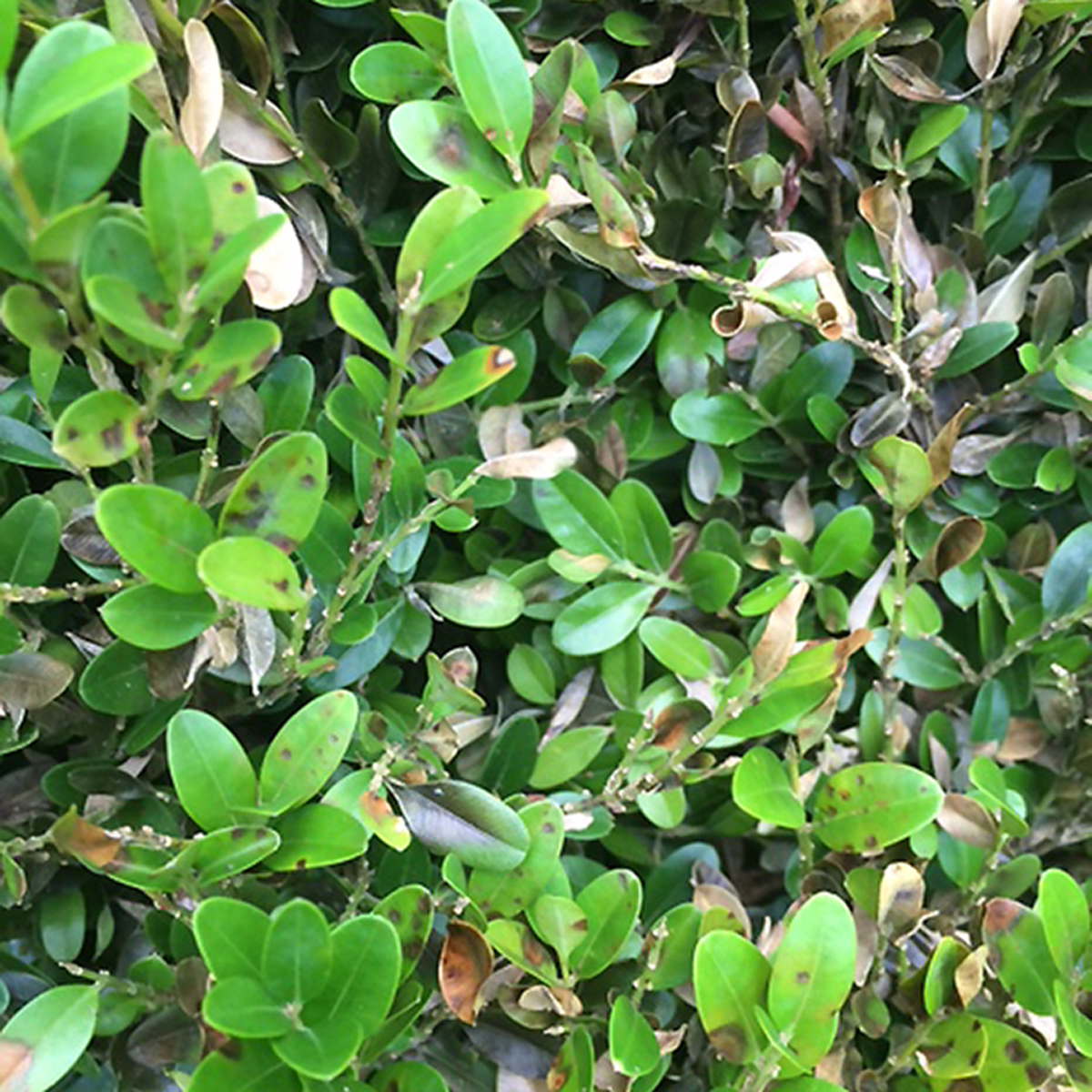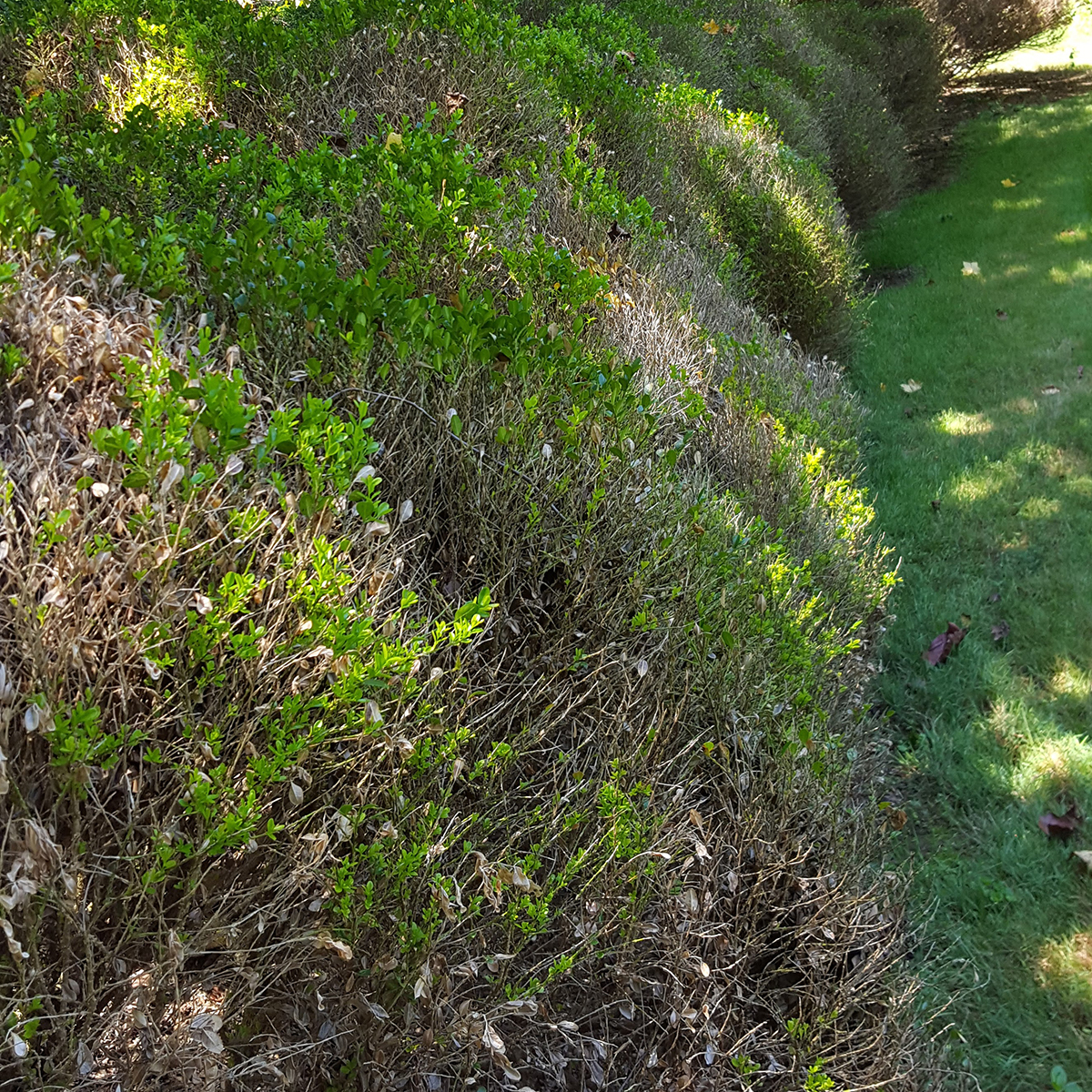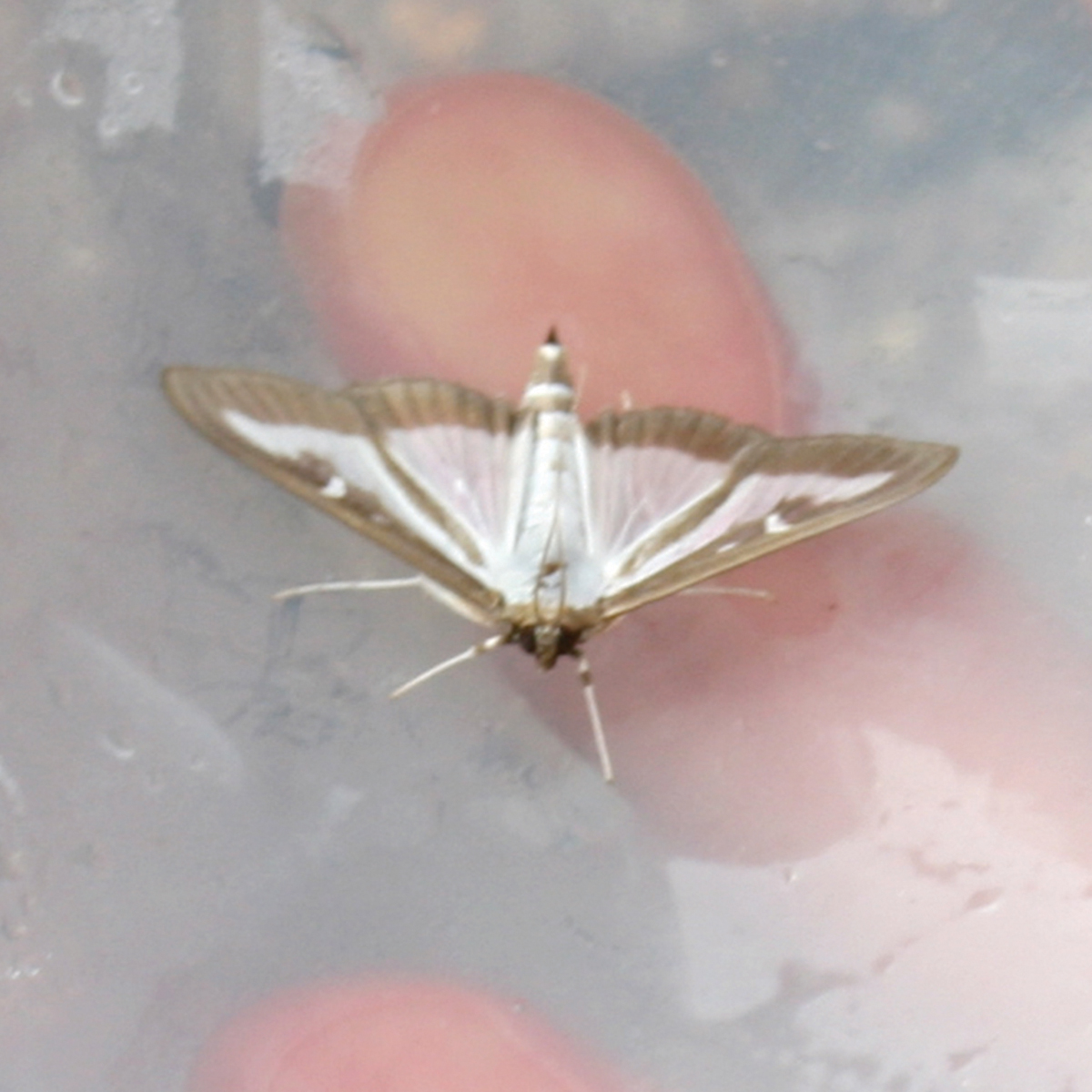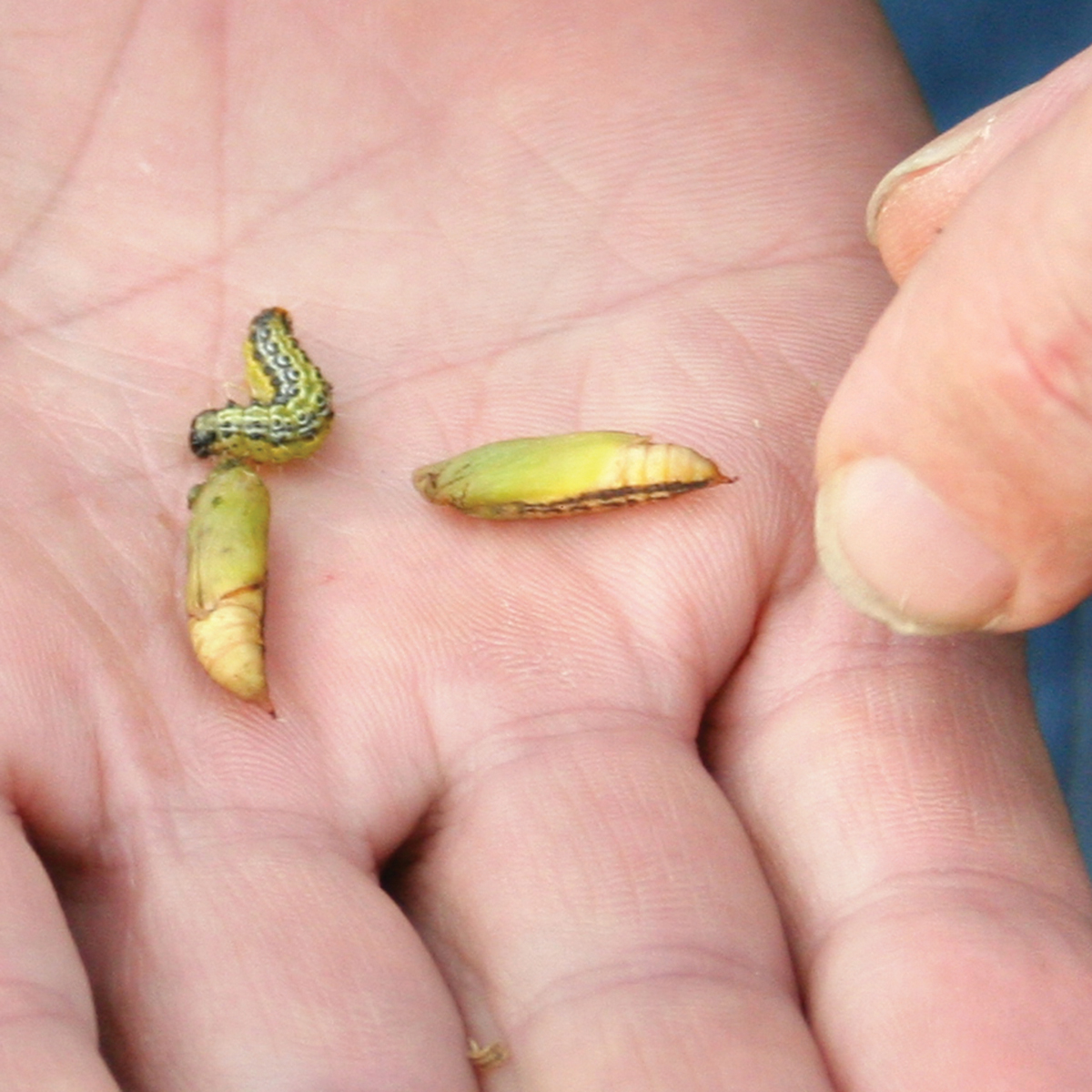
ABOUT BOXWOOD / Frequently Asked Questions
Boxwood, “Man’s Oldest Garden Ornament,” was introduced to North America from Europe in the mid-1600s and reached its peak popularity in the United States in the 19th century. Horticultural interest in the genus Buxus is maintained today by many nurserymen, landscapers and homeowners.
While the most familiar forms are what are commonly referred to as “American” (Buxus sempervirens) and “English” (Buxus sempervirens ‘Suffruticosa’) boxwood, there are 97 species and 261 valid cultivars, each exhibiting a wide variety of forms and foliage. Further information about proper cultivation, cultivars suitable for landscape applications, and suppliers of boxwood is included in several ABS publications.
Click here to download the International Registration List of Cultivated Buxus L.
HISTORY:
When and where was the the first boxwood planting in America?
The first planting occurred about 1653 at Sylvester Manor on Shelter Island, the NW part of Long Island in New York, using boxwood brought over the Atlantic Ocean from Amsterdam.
SELECTING CULTIVARS:
What are some boxwood plants recommended for the landscape?
It is a popular myth that there are two kinds of boxwood - Buxus sempervirens (American) and Buxus sempervirens ‘Suffruticosa’ (English). Currently there are approximately 217 registered cultivars and about 148 different cultivars and species that can be obtained commercially. Different boxwood plants and species vary tremendously in size, shape, leaf characteristics, growth rates, and hardiness. Among the many commercially available boxwood, the following are most frequently found (in no specific order): B. harlandii, B. microphylla ‘Compacta’, B. microphylla var. japonica, B. sempervirens ‘Elegantissima’, B. sempervirens ‘Graham Blandy’, B. sempervirens ‘Suffruticosa’, B. sempervirens ‘Vardar Valley’, B. sinica var. insularis ‘Justin Brouwers’, B. sinica var. insularis ‘Winter Beauty’, B. sinica var. insularis ‘Wintergreen’, and Buxus ‘Green Mountain’.
As boxwood blight begins to dominate, more and more attention is being paid to cultivar selection. All boxwood species, varieties, and cultivars are susceptible to this disease. However, their susceptibility levels differ greatly with some species and cultivars being much more susceptible than others. According to Dr. Kelly Ivors of North Carolina State University who evaluated over 70 cultivars commonly-used in the U.S., the ten least susceptible cultivars are Green Beauty, Northern Emerald, Wedding Ring, Wintergreen, Golden Dream, Winter Gem, Nana, Franklin’s Gem, Wee Willie, and Richard. Nine of these are Asiatic cultivars belonging to B. microphylla or B. sinica, while Richard is a B. harlandii. None of the English and American boxwood made this short list. (Excerpt from our Spring 2019 Boxwood Bulletin, Saving American Gardens from Boxwood Blight by Chuan Hong)
How are boxwood plants used in the landscape and where can they be seen?
Boxwood plants may be used as individual specimens, hedges, parterres and groups. Special uses include growth in containers, topiary, and bonsai. Boxwood can be seen growing in many public and private gardens in the United States, but most especially in the Mid-Atlantic area. The largest collections of species and cultivars can be seen at the Virginia State Arboretum in Boyce, Virginia, where The American Boxwood Society maintains the Boxwood Memorial Garden and at the U. S. National Arboretum in Washington, D. C. Care should be taken in selecting boxwood that fit the height and shape desired for the location. Back to Top
BOXWOOD CARE
Seasonal Care. When would I plant, mulch, prune...?
Boxwood is considered to be a low-maintenance shrub, but certain practices are recommended to keep the plants healthy. Boxwood can be planted in the spring, which is also the time for monitoring insects. Inspection of plants for insects should continue in the summer, during which time there should be attention to weed control and the watering needs of the plants. The fall is the best time for boxwood planting and mulching, while the winter is the ideal time for pruning, thinning, and protection.
Read more from our Boxwood Bulletin archives on Spring Care Fall Care Winter Care
How do I prevent Boxwood Blight?
The following Resources have the most up to date information on Boxwood Blight:
Horticulture Research Institute: Boxwood Blight Knowledge Center
Virginia Cooperative Extension: Boxwood Blight Task Force
USDA Boxwood Information Center
USPEST.org: Boxwood Blight Infection Risk Model
 Photos courtesy of Chuan Hong, Virginia Tech
Photos courtesy of Chuan Hong, Virginia Tech
Are boxwood susceptible to other pests and diseases?
The various pests and diseases that may affect boxwood vary to some extent according to specific plant species and cultivars. Common pests include leafminer, mites, and psyllid. Each of these should be controlled if infestation is severe or intolerable. Although nematodes and several types of fungi may infect boxwood, they are not usually major threats. Boxwood decline, presumably due to the fungus Paecilomyces buxi, is limited to B. sempervirens ‘Suffruticosa’, and is not a serious problem as it was several decades ago. It should be emphasized that deer will typically not eat boxwood, as the plant reportedly contains a toxic alkaloid.
Read more from our Boxwood Bulletin archives on Leafminer or click here to watch a video on Leafminer
Boxwood Tree Moth
Box tree moths, a major pest in the UK since 2006, were spotted in Ontario, Canada in August of 2018 and have been found in several location across the US in 2021. Identification and treatment is key in preventing the spread of these pests.
The Box Tree Moth (BTM) is a pest for which everyone ought to be looking. If you’re not yet familiar with the BTM, see Resources, below. As professionals and home gardeners, we play an important role. The guidance asks us to:
SCOUT your boxwood frequently – especially the interior – looking for webbing, leaves that look like they have been peeled, or the caterpillars themselves.
REPORT the finding if you see the moth or the larval form as a caterpillar. Search online for your state’s regulatory authority where you can submit your discovery.
HANDPICK and dispose of the caterpillars. Contact your local Cooperative Extension service for their recommendation for a chemical treatment if necessary.
DISPOSE of infested clippings or shrubs to prevent the spread.
EDUCATE your clients and fellow landscapers and gardeners!! Vigilance will be key to containing the moth and its damage to boxwood.
Areas under Quarantine Increased, Compliance and Certification Explained
Additional areas in MA, MI, NY, and OH are now included in the quarantine. Moving boxwood from quarantined areas requires a compliance agreement and certification of compliance. Read more in the Federal Order issued by USDA – APHIS.
The Box Tree Moth appeared in Europe almost twenty years ago, spreading mainly from nursery stock. Focusing on that cause, it makes sense that there are efforts to create protocols and certifications of growers to minimize the possibility of spread in nursery stock here in the U.S. Quarantines are in place at this time, with growers awaiting the certification requirements since the moth’s discovery in 2019 in North America.
BTM Outside Resources:
USDA-APHIS page, Box Tree Moth. Also check out their Box Tree Moth Federal Quarantine Boundary Viewer
National Plant Board. Box Tree Moth Compliance Agreement. State Plant Regulatory Officials.
Ohio State Extension Entomologist Joe Boggs lists webinar opportunities and information at Buckeye Yard and Garden onLine (BYGL), Box Tree Moth with updates posted regularly.
Michigan updates and links are found at Box Tree Moth.
East coast gardeners may want to visit Box Tree Moth pages from UMass Amherst and Cornell University. Both contain information on BTM and links where finding the pest can be reported.
 Photos courtesy of Andrea Filippone
Photos courtesy of Andrea Filippone
How do I know whether I should fertilize my boxwood?
There is no regular schedule to guide fertilization of boxwood. The most reliable guide to applying fertilizer is by testing the soil. Soil samples analysis by the Cooperative Extension Service will provide appropriate fertilizer recommendations for a specific site. If the boxwood begins to show symptoms of nitrogen deficiency, then it may be time to fertilize. The earliest symptom of nitrogen deficiency is yellowing of lower leaves. It will have a rather uniform yellowing, that is more pronounced on the older leaves inside the plant. The leaves then become smaller and thinner and turn quite bronze in winter. Boxwood leaves will normally stay on the plant for three years. If they fall off earlier, this may be a symptom of nitrogen deficiency.
What kind of fertilizer is best and when should I use it?
Granular, urea fertilizer with a 10-6-4, or similar, analysis will be appropriate in most situations. Late fall applications of fertilizer promote root growth and provide best results.
What is the best method to apply fertilizers?
Broadcast fertilizer around the base of the plant - just beyond the drip line. Surface application is the easiest and fastest technique. It is effective around the drip line because the most active roots are located there. Fertilizer particles that come into direct contact with the roots of unmulched boxwood can cause root bum. If the fertilizer is over applied, this will cause the foliage to brown and may even result in branches dying. This can be avoided by broadcasting fertilizers only on mulched boxwood when the soil has adequate moisture. Deep root fertilization, drilling holes and filling them partially with fertilizer, is not recommended. While it does eliminate volatilization of urea and ammonium it is not worth the effort. The roots of boxwood grow close to the surface and they do not benefit from deep root fertilization.
What does soil pH have to do with fertilizer?
The pH needs to be in a proper range in order for the nutrients to be available to the plant. The optimum soil pH for boxwood is between 6.8 and 7.5. If the pH is below the recommended range, add dolomitic lime. This lime has low oxide content and will persist in the soil for 4–7 years depending on application rates and soil type. Your County Extension Service is an excellent resource for recommendations for properly adjusting soil pH. A soil test analysis always provides the most reliable guide to determine if the pH or nutrients need to be adjusted, and to the appropriate degree.
- Excerpted from the “BOXWOOD HANDBOOK A Practical Guide to Knowing and Growing Boxwood”. Click here to order.
How are boxwood propagated?
By far the most widely used method is stem cuttings, which will produce plants identical to the parent plants. Cuttings, best taken from parent plants from July to December, should be removed from one year old branchlets and placed into containers filled with one of several appropriate media mixes. With frequent watering, rooting usually takes place in two to three months. Boxwood can also be grown by layering, in which roots develop on a stem of a parent plant. Finally, plants can be grown from seedlings, but they can be somewhat variable from the parent plant. Back to Top
LEARN MORE:
How can I learn more about boxwood?
Detailed sourcebooks for boxwood are few. The most highly recommended was Boxwood Handbook: A practical guide to knowing and growing boxwood. The author, Lynn R. Batdorf, is the curator of the National Boxwood Collection at the U. S. National Arboretum in Washington, D.C. and is the ABS Registrar for the International Cultivar Registration Authority for Buxus L. Click here to order.
Have further questions?
Email The American Boxwood Society at amboxwoodsociety@gmail.com
The Different Strains of Boxwood Blight
Presented by Margery Daughtrey Cornell Cooperative Extension. Long Island Horticulture Research & Education Center.
Future Regulation of Boxwood Blight
Presented by Jill Calaboro. Science & Research Programs Director at AmericanHort.
Blight Resistant Boxwood Using Genetic Engineering
Presented by Paul Vincelli. Professor of Plant Pathology at the University of Kentucky.
Boxwood Fungicide Management | Cures and Prevention
Presented by Jim LaMondia. Chief Scientist at the Connecticut Agriculture Experiment Station.
Using Mulch to Manage Boxwood Blight
Presented by Chuan Hong. Professor in the Department of Plant Pathology & Weed Science at Virginia Tech.
Mulching Options to Prevent Disease in Boxwood
Presented by Anton Baudoin. Virginia Tech.
Using Boxwood in Public Gardens | Longwood Gardens
Presented by Matt Taylor. Director of Research & Conservation at Longwood Gardens.
70 Years of Love for Boxwood and Family
Presented by Paul Saunders. Owner of Saunders Brothers Wholesale Nursery.
Boxwood Diseases & The Future of Boxwood | Industry Perspectives
Presented by Mark Sellew of Prides Corner; Robert Saunders of Saunders Brothers Inc; and Hugh Crump of Greenline Design.
USDA Boxwood Breeding Research | Boxwood Diseases
Presented by Margaret Pooler. Supervisory Research Geneticist (Plants) at the USDA.
Sanitation Practices for Mitigating Boxwood Blight
Presented by Chuan Hong. Professor in the Department of Plant Pathology & Weed Science at Virginia Tech.
History of Boxwood Blight in Europe
Presented by Didier Hermans. Herplants Nursery in Belgium.
Managing Boxwood Leafminer
Presented by Dan Gilrein. Cornell Cooperative Extension. Long Island Horticulture Research & Education Center.
ASK A QUESTION
Have a question for us? Experts at the American Boxwood Society are happy to answer your boxwood related questions. Email us at amboxwoodsociety@gmail.com. Your question and our answer may even be featured in an upcoming issue of our Boxwood Bulletin!